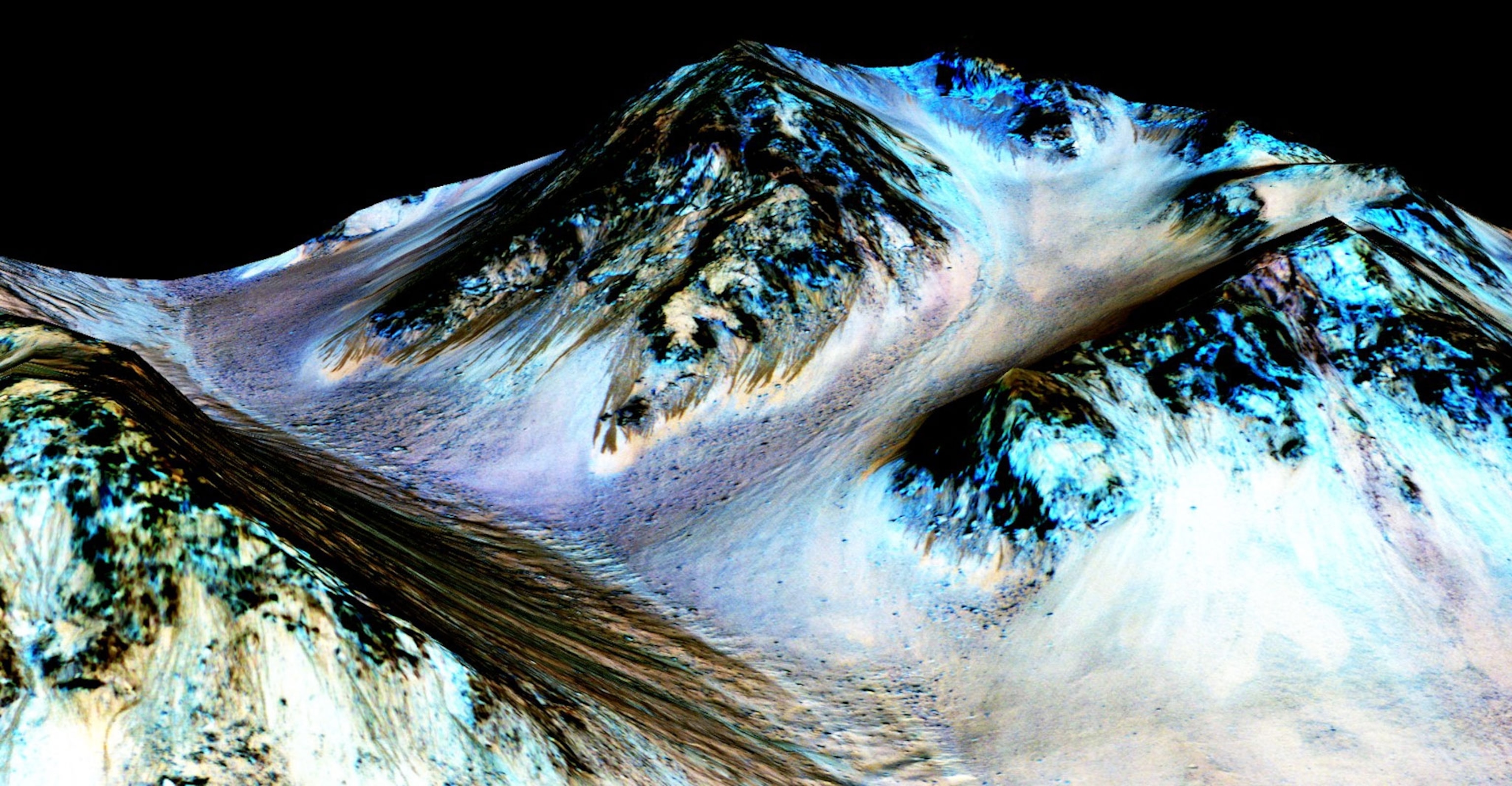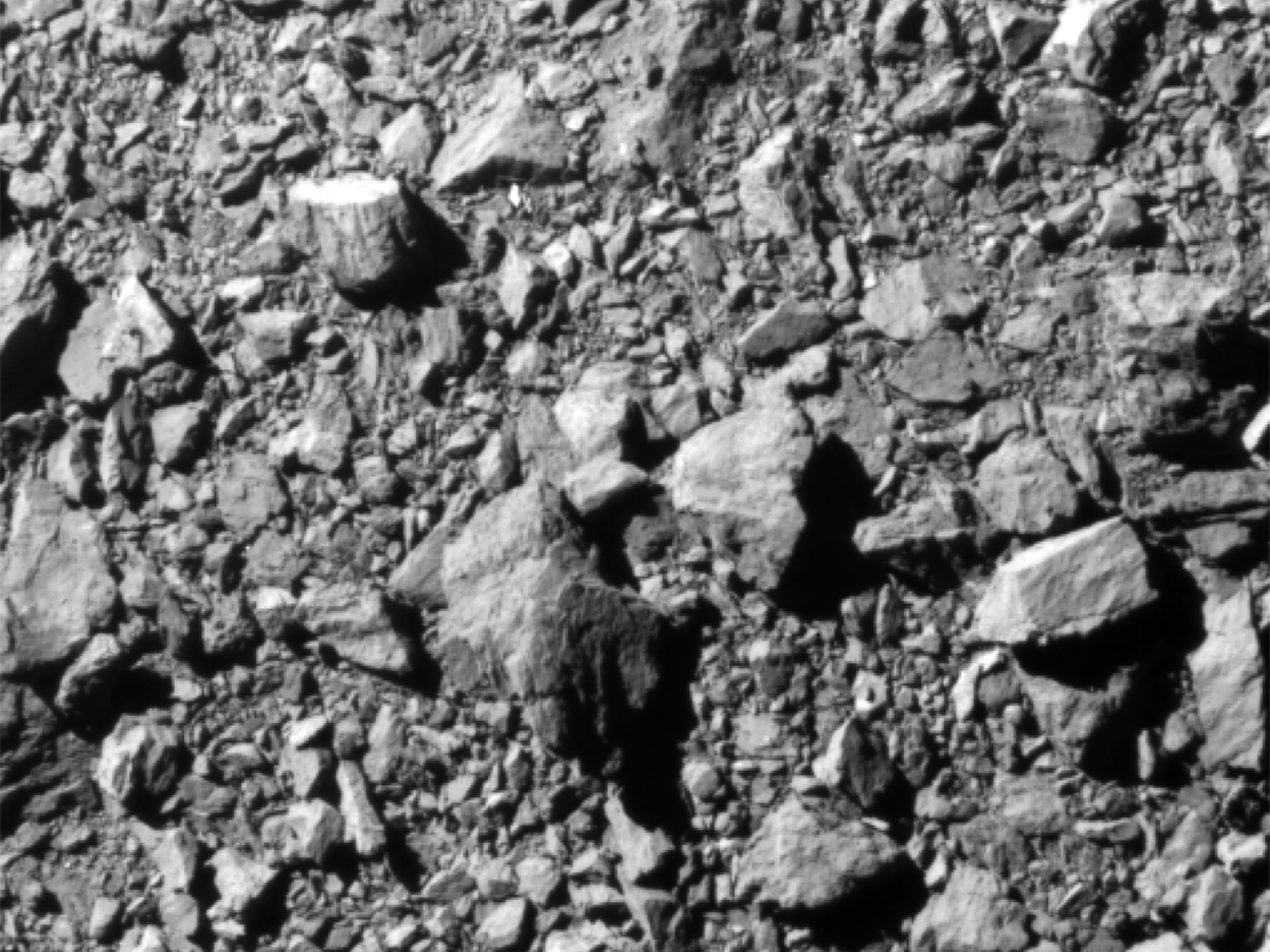
NASA Finds 'Definitive' Liquid Water on Mars
Dark streaks that appear and vanish seasonally are made of salty water, new observations show.
Water trickles down gullies and crater walls on the surface of Mars, raising intriguing questions about whether life could exist on the red planet.
The findings are the strongest evidence yet that liquid water darkens the Martian surface today; we've known for years that water flowed on Mars long ago.
Described Monday in Nature Geoscience, the observations suggest that this water appears seasonally, forming dark lines as it tumbles down steep Martian slopes. But scientists still don’t know where the water is coming from, or if the chemistry is even right for supporting life.
For now, the find solves the mystery of dark streaks that appear and disappear seasonally, called recurring slope lineae. These are "among the most confusing, mysterious landforms there are,” says Bethany Ehlmann, a planetary geologist at Caltech.
Long, dark and fleeting, the streaks were first spotted in 2010 by Lujendra Ojha, then an undergraduate at the University of Arizona. Ojha was studying images returned to Earth from the HiRISE camera, aboard NASA’s Mars Reconnaissance Orbiter. At the time, he says, he had no clue how important his observation would be.
“I was a fool looking at fool’s gold,” says Ojha, now at Georgia Institute of Technology.
A half-decade later, that fool’s gold has proven significantly more valuable. During the intervening years, scientists repeatedly pointed HiRISE at Martian slopes and craters. They could see that the dark streaks appeared, lengthened, and vanished during warmer seasons; that they appeared each time in the same places, near the planet’s equator; and that they oozed from steep slopes and crater walls.

Those features could all be explained if water were seeping down Martian slopes and darkening their surface, says University of Arizona’s Alfred McEwen. There was just one problem: “We had no direct detection of water,” he says. “That was just our best guess.”
Now, the team has associated the streaks with hydrated salts in four different areas where the streaks appear. The salts are called perchlorates and have water molecules trapped in their crystal structures.
“The presence of hydrated salts in these flows means that the streaks are forming due to contemporary water,” Ojha says.
Is Mars Sweating?
A big question swirls around the origin of that water: Where is it coming from? One possibility is that the seeps are fueled by an aquifer or melting subsurface ice. These scenarios would have Mars essentially sweating, with saltwater seeping from its pores and trickling down slopes as the planet warms.
The water might also be atmospheric in origin, which is the hypothesis the team seems to favor. In this scenario, surface salts absorb water vapor in the Martian atmosphere.
“If the humidity in the Martian atmosphere gets high enough, perchlorate salts will absorb the atmospheric water until the salt dissolves forms a liquid solution,” says Mary Beth Wilhelm of NASA’s Ames Research Center.
Wherever its source, it's no surprise that there’s water on Mars. Entire Martian landscapes have been sculpted by the stuff (including an ancient mile-deep sea)—albeit billions of years ago when the planet was warmer and more watery. The fleet of spacecraft currently exploring the Martian surface continually return data suggesting that water was once common. (In 2012, Curiosity rover found direct evidence for flowing water on Mars—in the past.)
But until now, evidence has been scarce for flowing water at the surface today. What it means, in the bigger picture of planetary exploration and the search for life beyond Earth, is still a mystery.
Follow Nadia Drake on Twitter and on her blog at National Geographic's Phenomena.
For younger readers who want to learn more about Mars, check out astronaut Buzz Aldrin's new National Geographic Kids book, Welcome to Mars: Making a Home on the Red Planet.





